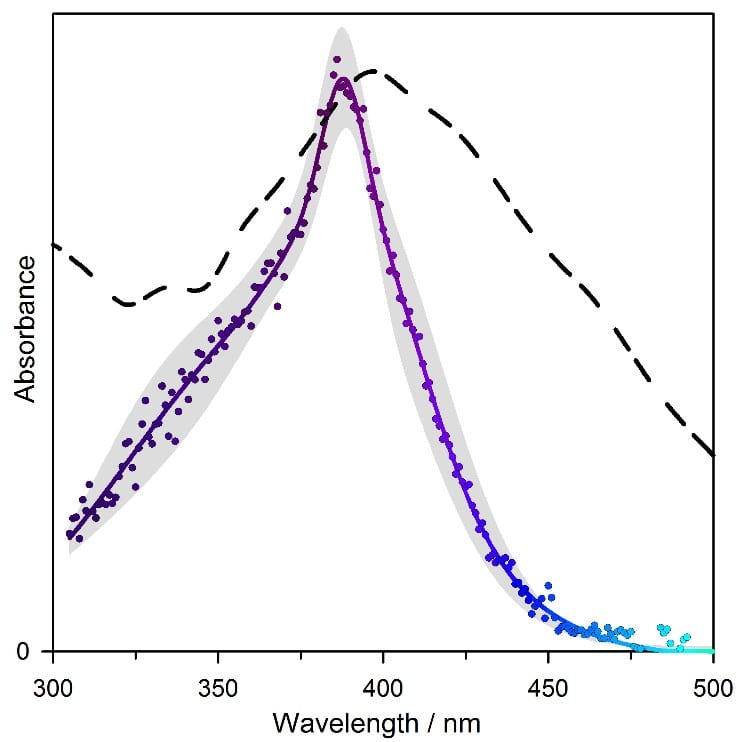Criegee intermediates stabilized in the supersonic expansion are directly detected in this laboratory by time-of-flight mass-spectrometry using focused vacuum ultra-violet (VUV) radiation (118 nm) generated by frequency tripling the third harmonic output of a Nd:YAG laser. The VUV photon energy (10.5 eV) is sufficient energy to ionize the Criegee intermediate without inducing fragmentation.

A representative UV induced depletion measurement of the m/z 86 signal from photoionized MVK-oxide.
The electronic spectra of various alkyl-substituted Criegee intermediates have been measured by monitoring ground state depletions in the Criegee intermediate photoionization signal. UV-vis excitation of Criegee intermediates induces a strong π*←π transition associated with the carbonyl oxide group that results in prompt photodissociation to O-atom and carbonyl co-products. Fragmentation of the Criegee intermediate results in a decrease in photoionization signal of the parent mass channel. Absorption spectra are obtained by monitoring the change in photoionization signal of the parent mass channel while scanning the UV-vis laser.
An experimental UV absorption spectrum, obtained via depletion measurements of MVK-oxide in the TOF-MS, with a theoretically predicted spectrum shown for comparison.

